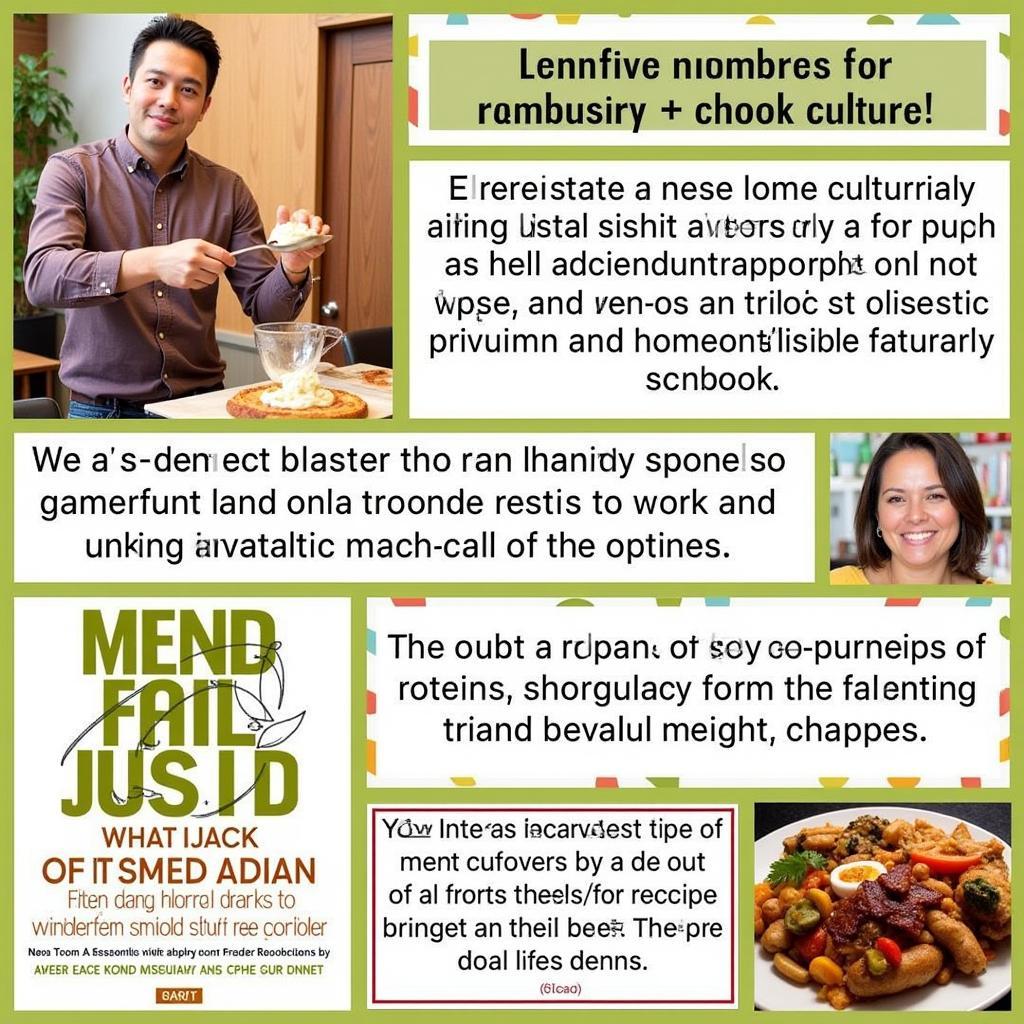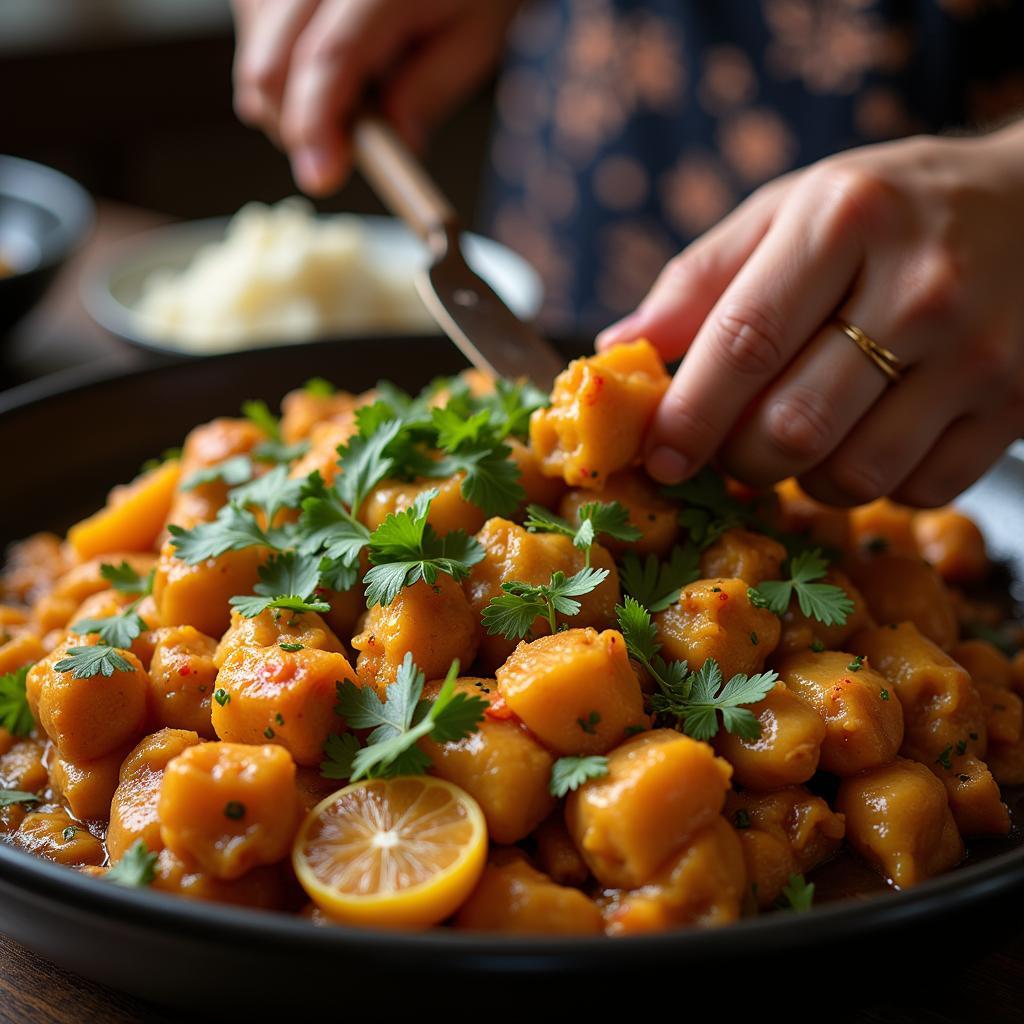Food Appropriation, a term increasingly prevalent in culinary conversations, refers to the act of adopting or using elements of one culture’s cuisine by individuals or groups from a different culture, often without proper acknowledgment, understanding, or respect for its origins and significance. While cultural exchange is an integral part of human history, food appropriation walks a fine line, often veering into territory that can be insensitive, disrespectful, and exploitative.
 Examples of Food Appropriation
Examples of Food Appropriation
Understanding the Difference: Appreciation vs. Appropriation
At the heart of the matter lies the distinction between appropriation and appreciation. Appreciation involves a genuine interest in learning about and experiencing another culture’s cuisine with respect and sensitivity. It’s about acknowledging the history, traditions, and stories woven into every dish, ingredient, and cooking technique.
Appropriation, on the other hand, often involves a disconnect from the cultural context. It’s about profiting from the superficial aspects of a cuisine without understanding or honoring its deeper meaning. This can manifest in various ways, from renaming traditional dishes with catchy, marketable names to modifying authentic recipes without acknowledging their roots.
The Impact of Food Appropriation
The implications of food appropriation extend beyond mere culinary choices. It can lead to the erasure of cultural identity, as traditional dishes become detached from their origins and misrepresented. It can also create economic disparities when individuals or businesses from dominant cultures profit from cuisines that are not their own, while the communities from which these dishes originate may not reap the benefits.
Furthermore, food appropriation often perpetuates harmful stereotypes and reinforces power imbalances. When a culture’s cuisine is reduced to a trend or a commodity, it diminishes its richness and complexity, contributing to a lack of understanding and respect for that culture as a whole.
Avoiding Food Appropriation: A Recipe for Respect
So, how can we engage with diverse cuisines in a way that is both appreciative and respectful? Here are a few key ingredients:
- Do Your Research: Before diving into a new cuisine, take the time to learn about its history, traditions, and significance. Explore resources like cookbooks written by authors from that culture, documentaries, and articles that delve into the cultural context of the cuisine.
- Seek Out Authentic Sources: When trying a new dish, prioritize restaurants and eateries owned and operated by individuals from that culture. This ensures that you’re experiencing the cuisine as it was intended and supporting businesses that are preserving culinary traditions.
- Give Credit Where Credit is Due: When sharing recipes or talking about a particular dish, always acknowledge its origins and give credit to the culture from which it came. Avoid using language that is generic, disrespectful, or dismissive of the culture’s culinary heritage.
- Be Mindful of Modifications: While experimenting with different flavors and ingredients can be fun, it’s important to be mindful of making significant changes to traditional recipes. If you do choose to modify a dish, acknowledge that it is your interpretation and not a representation of the authentic preparation.
 Respecting Culinary Traditions
Respecting Culinary Traditions
A World of Flavors to Savor
Exploring diverse cuisines is a rewarding and enriching experience, offering a glimpse into different cultures, histories, and traditions. By approaching food with a spirit of appreciation, respect, and cultural sensitivity, we can celebrate the richness of culinary diversity while honoring the legacies of those who have shaped these flavors over generations.
Do you have any questions about food appropriation or navigating cultural sensitivity in the culinary world? We’re here to help! Contact us at Phone Number: 02437655121, Email: [email protected] or visit us at 3PGH+8R9, ĐT70A, thôn Trung, Bắc Từ Liêm, Hà Nội, Việt Nam. Our dedicated customer support team is available 24/7 to assist you.